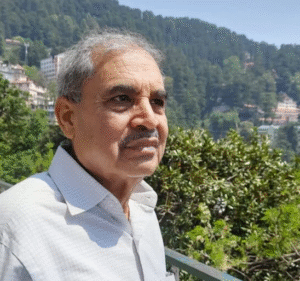Handshake in Beijing, Hard Power on the LAC
In my two recent columns for this paper, I argued that China’s frontier playbook fuses diplomacy with hard power—offering friendly handshakes in conference halls while fortifying its military footprint along contested borders. First cameinfrastructure upgrades at Pangong Tso. Then followed the announcement of a massive hydropower project on the Great Bend of the Brahmaputra. Both developments either coincided with or immediately followed India’s high-level diplomatic outreach to Beijing.
Now comes Act III of this unfolding Himalayan theatre: On July 15, the same day India’s External Affairs Minister concluded his visit to China, state-run Global Times released a video showcasing a “confrontational drill” by the People’s Liberation Army (PLA) featuring armed robotic quadrupeds—machine-gun-wielding “robot wolves”—in mountainous terrain, allegedly close to the Line of Actual Control (LAC).
It’s a moment that blends science fiction with stark strategic messaging.
Machine Gun Dogs—or Wolves—on the Ridge
Officially referred to as part of China’s “intelligentizedwarfare” efforts, these robots are built like dogs but are being marketed as “wolves”—a linguistic tweak likely meant to evoke fear and technological prowess. Their specifications are sobering:
The drills, conducted by the 76th Group Army under the PLA’s Western Theater Command, suggest more than just experimentation. The terrain, kit and coordination all point toward combat conditioning for the Himalayas.
Timing, as Always, Is the Message
The exact date of the exercise remains unspecified, but its publication on July 15—immediately after Jaishankar’s three-day visit to China—makes the timing more than symbolic. This is classic Chinese signaling: say one thing in the meeting room and show another on the ground.
It aligns with a well-worn pattern:
China doesn’t just prepare; it broadcasts. And what it broadcasts now is not just muscle, but microchip.
The Message Hidden in the Metal
By showcasing armed robots operating at altitude, China is trying to achieve multiple objectives:
Why India Should Be Alarmed—And Act
The LAC is not just a frontier—it is becoming a live laboratory for autonomous and semi-autonomous combat systems. For India, the implications are severe:
A Call to Action: India’s Response Must Evolve
India has made commendable progress on infrastructure—roads, tunnels, logistics—but the battlefield is evolving beyond boots and bunkers. New imperatives include:
Beware the Metal Masquerade
From Pangong to the Brahmaputra to these robotic wolves—China’s actions are not isolated provocations. They form a coherent strategy of post-dialogue hardening—militarizing the frontier just after extending a diplomatic hand.
India cannot afford to treat each incident as a one-off headline. These are part of an evolving doctrine, where borders are shaped not by treaties, but by technologies. The wolf may wear metal instead of fur, but its instinct remains unchanged.
In the fog of mountain warfare, it is not the roar of artillery but the whir of machines that may mark the next shift. The LAC is now a lab for tomorrow’s wars.
Peace, certainly. But preparedness must now include the capacity to face down machines that fight like men.
About The Author

Mr. Hridaya Mohan (hridayamohan@yahoo.co.in) is a regular Columnist with a renowned Indian daily “The Hitavada”, “Bharat Neeti Media” and some other newspapers / magazines internationally. He lived and worked in Beijing for 6 long years as Chief Representative (China & Mongolia), SAIL. Recipient of “Sir M Visvesvaraya Gold Medal”for one of his papers, “Benchmarking of Maintenance Practices in Steel Industry” from The Institution of Engineers (India), he was awarded with “Scroll of Honour” for the excellent contributions to Engineering fraternity from IE(I), Bhilai, “Jawahar Award” for leadership excellence in SAIL and “Supply Chain Leader – 2017” award from IIMM. The writer lived and worked in Beijing for 6 long years as Chief Representative (China & Mongolia), SAIL.









